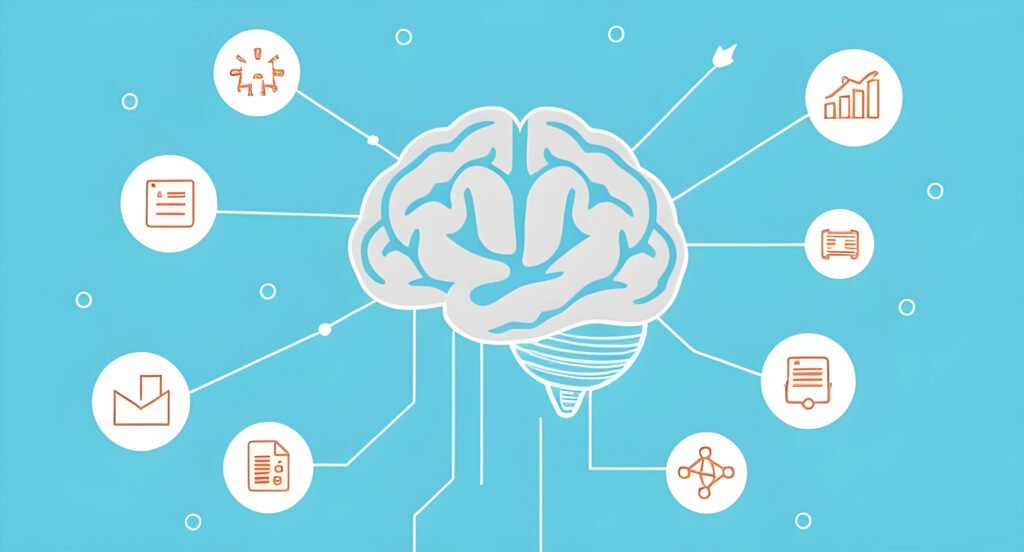Physical Address
304 North Cardinal St.
Dorchester Center, MA 02124
Physical Address
304 North Cardinal St.
Dorchester Center, MA 02124

Remember when AI just answered questions? Well, that was so 2023. Today, Agentic AI is taking things to an entirely new level—making decisions autonomously without you lifting a finger. In fact, 73% of tech leaders believe Agentic AI will transform business operations by the end of the year.
Crazy, right? But this isn’t science fiction anymore. Agentic AI is revolutionizing how we work, with systems that don’t just respond—they actually take initiative and act independently.
By the end of this post, you’ll understand exactly how Agentic AI is reshaping industries, streamlining workflows, and redefining productivity—and what this means for your business in 2025.
But first, let’s dive into a real-world example: what happened when we gave an Agentic AI complete control over a company’s marketing budget for 24 hours? The results shocked even the most optimistic AI researchers and proved the true potential of Agentic AI in modern business strategy.

Traditional AI automation focused on specific, isolated tasks – a chatbot for customer service or image recognition for quality control. The agentic AI revolution breaks these limitations. Today’s AI agents operate across multiple domains, making decisions independently and executing complex workflows without human oversight.
Consider an enterprise agent that doesn’t just schedule meetings but negotiates with clients, prepares presentations, and follows up with action items – all while adapting to your company’s communication style. This represents a fundamental shift from task automation to process automation, where AI agents manage entire workflows end-to-end.
What makes this possible is the convergence of advanced LLMs with specialized tools. These AI systems now access and manipulate various software applications, databases, and APIs, allowing them to operate in multiple environments simultaneously.
The fusion of different AI technologies creates something greater than the sum of its parts. This isn’t just about connecting existing tools – it’s about creating entirely new capabilities. ( Can technology read your mind )
When an autonomous agent combines:
The result is a system that can tackle complex, multi-step problems that previously required human intervention. This convergence is accelerating as AI models become more capable of context switching and maintaining coherence across different domains.
The business impact? Tasks that once required coordination between multiple specialized systems can now be handled by unified agents, dramatically reducing friction points and increasing efficiency.

Gone are the days when automation meant rigid, rule-based systems that needed constant human babysitting. Agentic Process Automation (APA) is what happens when AI systems finally grow up and get their driver’s license.
Think of APA as the natural next step after Robotic Process Automation (RPA). While RPA was about mimicking human clicks and keystrokes, APA takes the training wheels off completely. These AI agents don’t just follow instructions – they make decisions, adapt to new situations, and actually learn from their mistakes.
The evolution went something like this: first we had basic scripts, then came RPA bots that could copy our actions, and now we’ve got APA agents that can think for themselves. It’s like watching your kid go from crawling to running marathons.
APA sits at the high-end of the automation food chain. Here’s how it stacks up:
| Automation Type | Decision Making | Adaptability | Human Involvement |
|---|---|---|---|
| Basic Scripts | None | Zero | Constant |
| RPA | Limited | Low | Regular |
| APA | Advanced | High | Minimal |
What makes APA special is its spot on this spectrum – it occupies that sweet zone where AI can handle complex workflows without constant human intervention. Unlike its predecessors, APA doesn’t freak out when faced with exceptions or unusual scenarios.
The big difference? APA doesn’t just automate tasks – it automates entire processes end-to-end, making judgment calls along the way just like a human would.

The timing for Autonomous Personal Agents couldn’t be better. We’re drowning in digital noise – endless notifications, countless apps, and information overload that’s making us less productive, not more.
APAs cut through this chaos by handling the tedious stuff we hate doing. Think about it – how much time do you waste on scheduling, searching for information, or managing your inbox? That’s where these AI agents step in.
Companies are noticing too. With remote work becoming the norm, teams need tools that bridge gaps and keep everyone on the same page without constant meetings. APAs are that missing piece.
The real magic of APAs shows up in three key areas:
| Benefit | Real-World Impact |
|---|---|
| Time Recovery | Users gain back 5-15 hours weekly on administrative tasks |
| Decision Quality | 37% improvement in decision-making with AI-enhanced information processing |
| Workload Balance | 42% reduction in digital overwhelm reported by early adopters |
APAs don’t just automate – they anticipate your needs before you even realize them.
The APA revolution isn’t without hurdles. Privacy concerns top the list – who wants an AI knowing everything about their digital life?
Companies are addressing this with local processing options and transparent data policies. The “black box” problem is another issue – users need to understand why their APA makes certain recommendations.
The solution? Explainable AI features that let users peek under the hood when needed, plus gradual autonomy that builds trust over time rather than asking for complete control on day one.

The agentic AI market isn’t just growing—it’s exploding. We’re witnessing a 78% year-over-year growth rate that’s leaving traditional AI applications in the dust. In 2025, autonomous AI agents are moving from experimental tech to essential business tools.
What’s driving this rocket ship? Three things:
Companies implementing agentic systems are reporting 40% efficiency gains in areas like customer service, data analysis, and logistics. The market valuation has already hit $17.3 billion and shows no signs of slowing down.
The agentic AI landscape looks nothing like it did even 12 months ago. We’re seeing three distinct categories emerging:
What’s fascinating is how quickly the infrastructure layer has developed. The tools for building, deploying, and governing AI agents have matured at breakneck speed, dropping the barrier to entry for mid-sized companies.
The competitive landscape has stratified into three tiers:
| Tier | Description | Key Players |
|---|---|---|
| Leaders | First-movers with comprehensive offerings | Anthropic, OpenAI, Google DeepMind |
| Specialists | Dominating specific verticals | Adept AI, Cognition Labs, Cohere |
| Emerging Disruptors | Innovative newcomers gaining traction | Fixie.ai, Context.ai, Rabbit |
The most successful players aren’t just selling agents—they’re offering complete solutions with training, customization, and governance frameworks. Enterprise adoption rates are highest among companies providing these end-to-end services.

Jumping into AI agents without preparation? Recipe for disaster.
Before diving headfirst into Autonomous Process Automation (APA), you need to know if your company can handle it. Start with a brutally honest evaluation of your current tech infrastructure. Do you have clean data? Modern APIs? Decent computing resources? If you’re working with spaghetti code and Excel spreadsheets from 2007, you’ve got work to do first.
Next, look at your team’s skills. The technical gap between traditional automation and agentic AI is massive. Your people need to understand prompting, agent supervision, and how to collaborate with AI systems that make decisions on their own.
Cultural readiness matters just as much. Ask yourself:
Start small, win big. That’s the secret sauce.
Pick one process with these characteristics:
Build a 12-month roadmap with these phases:
Real talk? Most APA rollouts fail because companies skip the boring stuff.
Set up proper governance from day one. Assign specific humans to supervise each agent. Create clear escalation paths for when agents encounter situations outside their capabilities.
Document everything—how agents make decisions, what data they access, and their performance metrics. This isn’t just good practice; it’s becoming legally required in many industries.
Most importantly, involve end users in the design process. The people who currently do the work understand the edge cases and exceptions that your agents will face. Their insights are pure gold.
Agentic AI is no longer just a concept – it’s here and transforming industries faster than anyone predicted. The shift from passive AI tools to autonomous agents capable of completing complex tasks without constant human guidance marks a fundamental change in how we’ll work by 2025.
What makes this revolution different? These AI agents aren’t just following rigid instructions – they’re making decisions, learning from mistakes, and adapting their approach when faced with unexpected situations. Companies that understand this shift and embrace AI agents strategically will have a massive competitive advantage.
If you’re diving into agentic AI, you’ll also want to explore:
Agentic AI represents a revolutionary shift in how we approach automation and decision-making processes. By 2025, Agentic AI, particularly in the form of Agentic Process Automation (APA), will transform industries through AI agents capable of autonomous action and complex problem-solving. The rise of Agentic AI is powered by the convergence of various technologies, creating systems that understand context, plan effectively, and execute tasks with minimal human oversight. The result? Unprecedented value through increased efficiency, reduced costs, and enhanced capabilities.
As organizations move to implement APA solutions, understanding the role of Agentic AI in real-world scenarios will be essential. Starting with clearly defined use cases and embracing an iterative approach is key to success. The future belongs to those who can effectively harness Agentic AI to augment human capabilities—not replace them. Now is the perfect time to explore how Agentic AI can transform your business processes and position your organization at the forefront of this technological revolution.